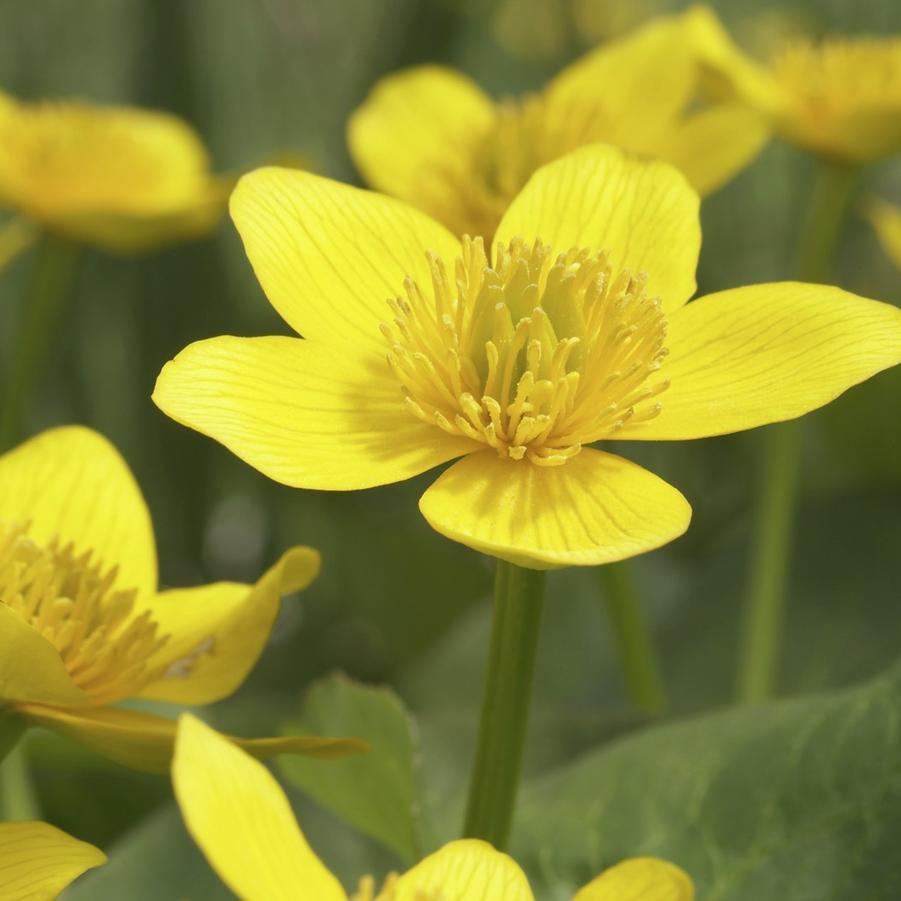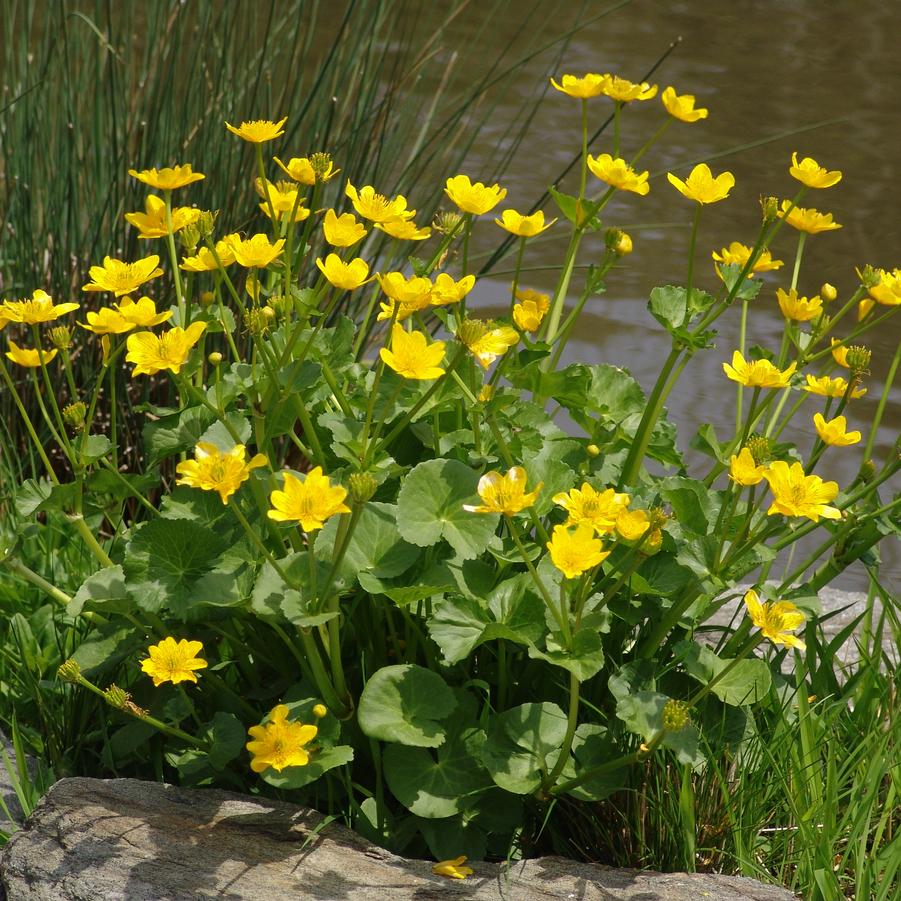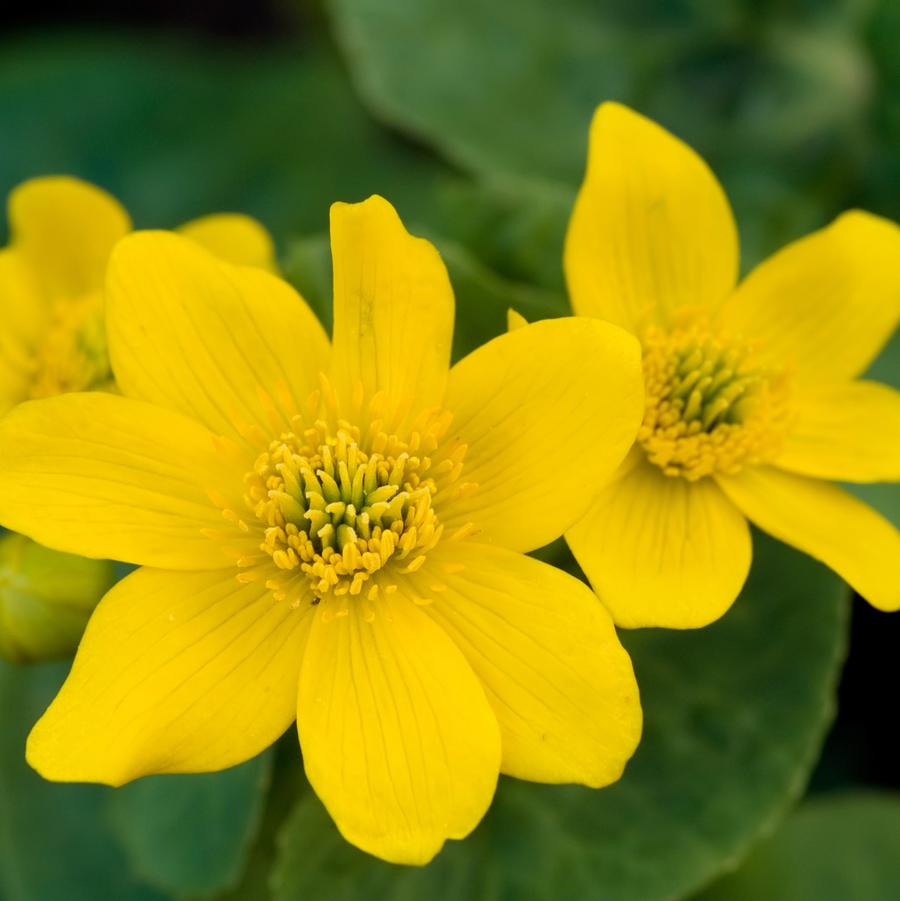





Plant Calculator
Enter the approximate length and width of the area you will be planting and click 'Calculate' to determine how many Caltha palustris you will need.
Correct and successful spacing is complex and depends on project conditions. We encourage you to call us at 877-ECO-PLUG for project specific recommendations and further assistance.
Caltha palustris
marsh marigold
- Category: Perennial, Native
- Hardiness Zone: 3-7
- Height: 8-12 Inches
- Spread: 12-18 Inches
- Spacing: 12 Inches
- Bloom Color: Yellow
Native to northern states and Canada, this little beauty is at home at pond's edge or along a stream. It is clumping by nature, but can seed in to form a dense groundcover in a consistently moist site. In early spring, hundreds of bright yellow buttercup flowers dot the green carpet of cordate foliage. Deer usually leave this alone! Found in marshes, swamps, and wet meadows from North Carolina to Alaska.
Wetland Indicator Status
| • | Obligate Wetland (OBL) |
Plug Type
| • | Landscape Plug™ |
For Animals
| • | Deer Resistant |
Season of Interest (Flowering)
| • | Early Spring |
Propagation Type
| • | Open pollinated |
Additional Information about Caltha palustris
Native to northern states and Canada, this low-growing beauty is at home at pond's edge or along a stream. Caltha palustris is clumping by nature, but can seed in to form a dense groundcover in a consistently moist site. In early spring, hundreds of bright yellow buttercup flowers dot the green carpet of cordate foliage. Due to its toxic nature, deer usually leave this alone!
Marsh marigold has a wide natural range, from Asia and Europe into Canada to the northern United States. It is thought to be an ancient species because of its wide distribution and primitive flower structure. It prefers the edges of oxygen-rich waters with rich soils, low in fertilizer runoff. Found in marshes, swamps, and wet meadows, it prefers constant moisture but can survive short periods of drought by shriveling its leaves and going into dormancy.
Caltha palustris runs wild in the woods that are part of our watershed to North Creek, and further White Clay Creek. Blooming brightly in April, many early-season pollinators including beetles, flies, and bees, use the pollen and nectar. A hardy and cheerful plant, it’s a sure sign of spring!
Growing & Maintenance Tips for Caltha palustris
Caltha palustris likes moist conditions and rich soils. It is most at home near a pond or stream, but can be happy in a low area that stays wet most of the time. Marsh marigolds do tolerate periods of drought, but will go dormant, losing all their leaves. Propagation is usually done by division.
